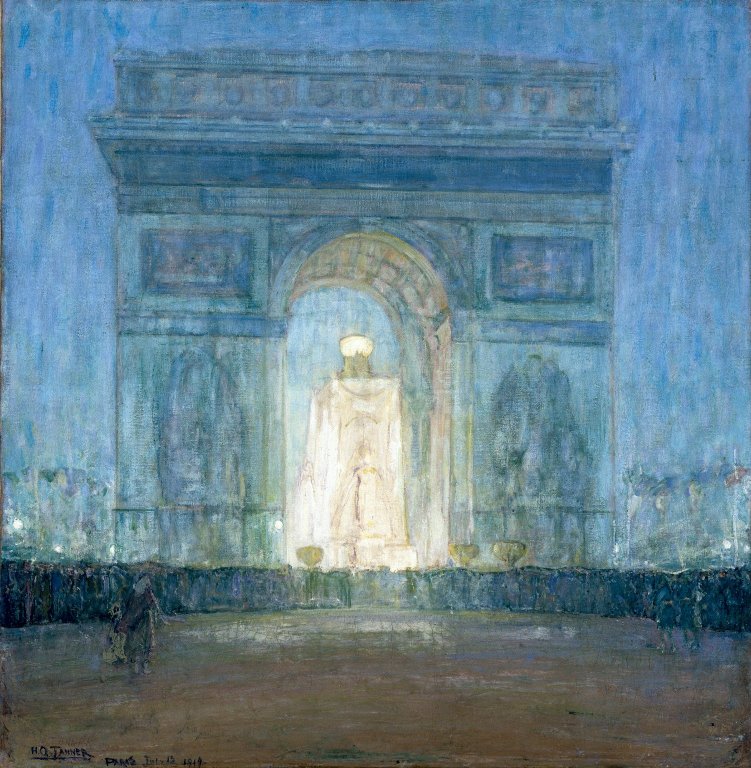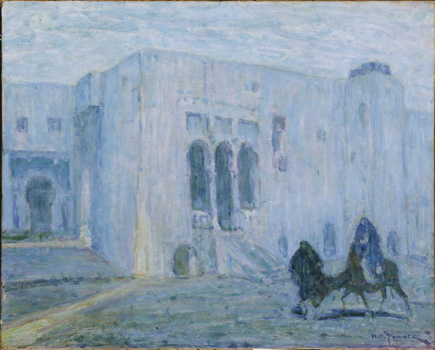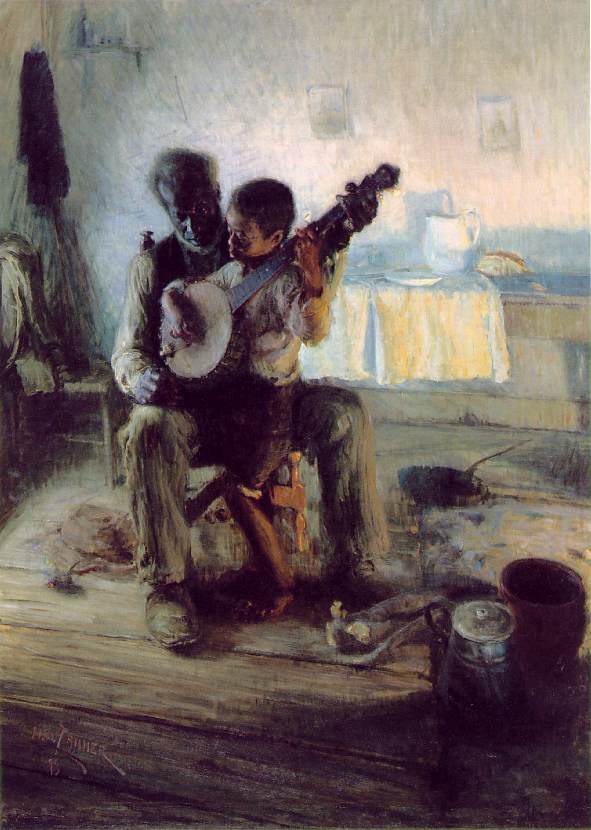
Henry Ossawa Tanner
Gateway Tanger, 1912
About:
Henry Ossawa Tanner was born in Pittsburgh in 1859, the first of five children born to Reverend Benjamin Tucker Tanner, a future bishop in the African Methodist Episcopal Church, and Sarah Tanner, a former slave who had escaped on the Underground Railroad. Their son’s unusual middle name was derived from the name of the town Osawatomie, Kansas, where the abolitionist John Brown had initiated his antislavery campaign. The family settled in Philadelphia in 1868, and in 1879 Tanner enrolled in the Pennsylvania Academy of the Fine Arts where he studied under the direction of Thomas Eakins. He began to exhibit at the Academy and at the Philadelphia Society of Artists. In 1889 he established a photography studio in Atlanta, Georgia. Although this venture failed, it was there that the young artist met a bishop in the Methodist Episcopal Church named Joseph Crane Hartzell, who arranged for him to teach drawing at Clark University. In 1890 Hartzell organized an exhibition of Tanner’s work in Cincinnati, and when none of the paintings sold he and his wife purchased them, thus providing Tanner with adequate finances for a period of study in Europe.

The Arch
In 1891 Tanner proceeded to Paris and commenced study under Jean-Joseph Benjamin Constant and Jean-Paul Laurens at the Academie Julian. Paris attracted him not only as a place to study art, but also because it provided a more liberal atmosphere free of the racial prejudice he had suffered in the country of his birth. Tanner soon joined the American Art Students’ Club and spent his first summer in France with the colony of artists at Pont-Aven, Brittany. Tanner’s choice of subject matter was briefly influenced by a growing consciousness of his racial identity, and during a trip to America in 1893 he delivered a paper entitled “The American Negro in Art” at the World’s Congress on Africa in Chicago. His concern during this period for creating dignified and sympathetic portrayals of negroes in art is exemplified by The Banjo Lesson (1893, Hampton University Museum, Virginia).

Flight Into Egypt, 1923.
After returning to Paris in 1894 one of Tanner’s paintings was accepted for exhibition at that year’s Salon. He abandoned the negro genre and, probably as a result of his intensely religious upbringing and the popularity of Oriental subjects during this period, began painting the biblical scenes that made him famous. After Daniel in the Lions’ Den (1895, location unknown) won honorable mention in the 1896 Salon, Tanner began to regularly achieve some important form of official recognition, and museums started to acquire his paintings. The following year, thanks to the financial backing of his lifelong friend and supporter Rodman Wanamaker of the Philadelphia retail firm, Tanner embarked on the first of several long trips to the Near East. These trips were made in order to familiarize himself with the topography and appearance of the people there, thus increasing the visual appeal of his biblical subjects by scrupulous attention to original settings and naturalistic details. It was also in 1897 that Tanner’s Resurrection of Lazarus (1896, Musee d’Orsay, Paris) won a third class medal at the Salon and was purchased by the French Government for the Luxembourg Gallery.

Palace of Justice, Tanger.
Although Tanner is best described as an expatriate, he maintained close ties to the country of his birth and remained concerned about the negro’s struggle for equality. In 1899 he married Jessie Macauley Olssen, an American of Scandinavian descent. Booker T. Washington visited him in Paris that year, and Tanner painted his portrait. He was a regular contributor to the NAACP after it was founded in 1910. In 1909 he was made an associate member of the National Academy of Design, along with Mary Cassatt, and he was elected to full membership in 1927. Severely depressed during World War I, Tanner curtailed his artistic activity and worked for the American Red Cross. Although he later returned to art, he no longer enjoyed the success and international prominence of the pre-war years and began a period of gradual decline. He achieved one of his greatest distinctions in 1923, however, when the French government named him chevalier of the Legion of Honor. He died in Paris in 1937. [This is an edited version of the artist’s biography published, or to be published, in the NGA Systematic Catalogue] Copyright National Gallery of Art

